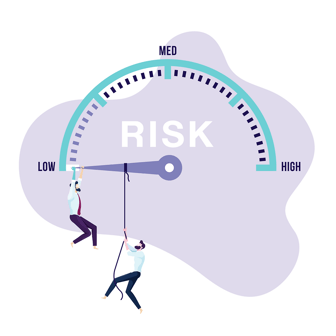To ensure your technology implementation is a success, here’s a list of key questions to ask before you begin. Some should be directed internally – to your IT personnel and end-user healthcare employees. Others should be directed externally – to the technology company providing the software.
1) What issue does the technology address? Can we fix it without new technology?
Get a clear picture of the problem you’re trying to solve. Is there an existing app that does the same thing? Get your IT department to examine your existing systems to see if you can make do with what you have. Your IT experts will be able to alert you if you’re considering something gimmicky. Ask them if the new technology locks you into a proprietary system or format that won’t work with your other systems or otherwise constrain you over the long-term.
 More importantly, talk to your employees. They’re the ones who are most familiar with the everyday processes in your patient care facilities and can speak honestly about whether a new technology will address a given issue. If you’re thinking about implementing a new staffing platform, for instance, it only makes sense to consult with staff to see whether they think it’s necessary, and to learn what kinds of features will help them carry out their work. Bring them in early, get their input and discuss the desired advantages and outcomes.
More importantly, talk to your employees. They’re the ones who are most familiar with the everyday processes in your patient care facilities and can speak honestly about whether a new technology will address a given issue. If you’re thinking about implementing a new staffing platform, for instance, it only makes sense to consult with staff to see whether they think it’s necessary, and to learn what kinds of features will help them carry out their work. Bring them in early, get their input and discuss the desired advantages and outcomes.
2) Will our staff use this?
After consulting with your employees, you may be convinced that the new technology will indeed solve a current problem or address a pressing issue. Whether your staff will use the technology, however, is an entirely different matter. Your staff may see the positive benefits. They may agree that it will save them time. However, if a technology isn’t user-friendly, or the training process too long and complicated, your patient care staff might never fully adopt it. Try piloting the technology with a small group to assess the difficulty of the onboarding process, and find out from the technology company what the costs will be for future maintenance and ongoing help desk assistance. 
Even if the learning curve is steep, the technology might be well worth implementing. To move things ahead, it helps to make the implementation personal to staff. Make it clear to why the technology matters and explain how it will improve their day-to-day work and assist them in delivering quality patient care.
3) How will the platform change your training process?
Healthcare and long-term care facilities operate 24/7. They can’t shut down while you introduce a new technology or platform. Therefore, you need a comprehensive training plan to ensure there’s a smooth transition.
A range of questions need exploring. Are there technological knowledge gaps among your employees that you’ll need to address? Can staff teach themselves to use it? Can it be learned over time, in stages, or do employees need a comprehensive view of the new technology up front? Can employees teach each other, as a team-building exercise? Can training be conducted in off-hours? When you compare the estimated training cost and the value of this particular technology, is it a worthwhile investment?
Since training on a new technology is crucial to its implementation and adoption, you need to know everything about your training needs. This step cannot be bypassed. Allow for different learning styles, and expect some glitches at first. A training plan that’s well thought out will raise adoption rates and make sure staff doesn’t get overwhelmed.
4) What are the risks?

Ask your IT team to map out all the risks related to the new technology, from data breaches to data and storage loss, connectivity issues, cybersecurity issues, lost passwords, accessibility, and so on. Consider the risks to your facility if this technology were to fail, or be insufficiently adopted. Work with your IT team to develop mitigation scenarios for each of the possibilities and weigh the costs.
5) What is the realistic timeline to launch, including staff training?
Once you’ve committed to implementing a new technology, the timeline to launch is critical. Ask the vendor supplying the software for a schedule that includes progress reports and a backup plan if they encounter delays. Ask them whether they’ve worked in extra time for testing, troubleshooting and training. Have your own contingency plan, as things often take longer than expected. If the vendor is handling the training, revisit all your training questions and acquire a detailed training schedule.
Implementing new technologies and new software in healthcare and long-term care facilities can bring a host of benefits to employees, stakeholders and patients alike. However, it’s important for management to plan far ahead, because the process of getting employees trained on and accustomed to new technology is crucial to its success.
For more information on integrating new technology in patient care, consult our other blogs.
Learn how BookJane helps health care facilities improve shift fulfillment by 40%, dramatically decrease their time to fill shifts, and significantly reduce burdensome scheduling and administration time.





